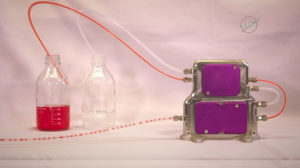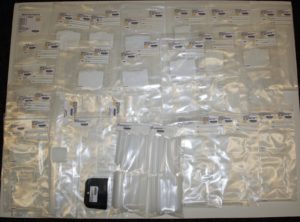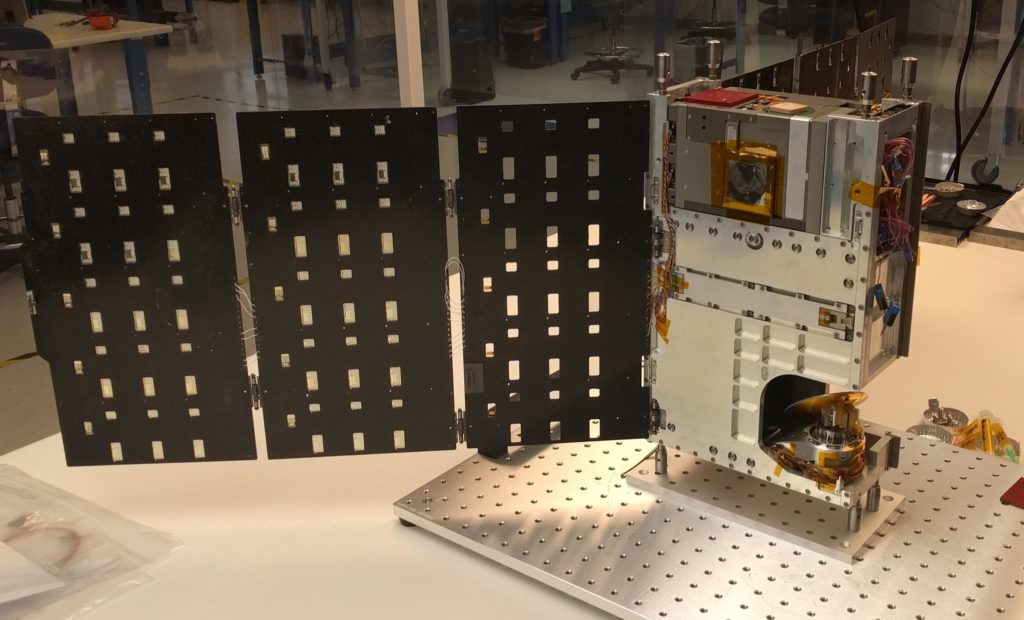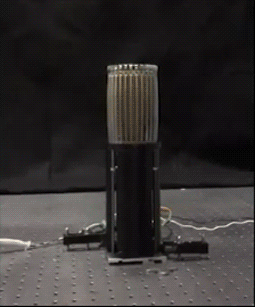With a launch scheduled for no earlier than May 21 from Virginia’s Eastern Shore, Orbital ATK’s Antares rocket will carry the company’s Cygnus spacecraft to the International Space Station. Among the 7,400 pounds of cargo aboard Cygnus on this CRS-9 mission are science experiments, crew supplies and vehicle hardware.
Some of those scientific experiments and technology demonstrations were highlighted in a May 19 “what’s on board” briefing.
Cold Atom Lab
The new Cold Atom Lab (CAL) facility could help answer some big questions in modern physics. CAL creates a temperature 10 billion times colder than the vacuum of space — down to about a billionth of a degree above absolute zero — then uses lasers and magnetic forces to slow down atoms until they are almost motionless. CAL makes it possible to observe these ultra-cold atoms for much longer in the microgravity environment on the space station than would be possible on the ground. Results of this research could potentially lead to a number of improved technologies, including sensors, quantum computers and atomic clocks used in spacecraft navigation.
Continuous Liquid-Liquid Separation in Microgravity

This experiment would validate a unique liquid separation system that relies on surface forces, rather than gravity, to extract one liquid from another.
This investigation uses a unique liquid separation system which relies on surface forces to accomplish liquid-liquid extraction. By exploring the microgravity effects on the process, the system is further developed and refined for use in chemical production. Andrea Adamo, founder and CEO for Zaiput Flow Technologies, said the technology has potential applications in pharmaceutical production and chemical synthesis in space.
Microgravity Investigation of Cement Solidification

Aleksandra Radlińska, of Penn State, is the principal investigator for Microgravity Investigation of Cement Solidification (MICS).
To assess the feasibility of cement as a process for constructing potential future space habitat structures, the effects of micgrogravity on the process must be understood, Radlińska said. Astronauts aboard the space station would combine pre-packaged bags of cement and water, then halt the chemical process with an alcohol additive. The samples would then be returned to Earth for comparison with equivalent ground-based samples.
Small Satellites
Three CubeSats, a class of small satellites — each about the size of a cereal box — part of the CRS-9 payload were highlighted at the briefing.
CubeRRT
The same interference that causes radio and television static also affects the quality of data that instruments like microwave radiometers collect. As the number of RFI-causing devices increases globally, NASA’s satellite instruments — specifically, microwave radiometers that gather data on soil moisture, meteorology, climate and more — will be more challenged in collecting high-quality data.
The CubeSat Radiometer Radio Frequency Interference Technology (CubeRRT) validation project will test a new way for NASA’s future radiometer missions to overcome the ever-increasing amount of radio frequency interference that satellites will encounter while collecting data.
TEMPEST-D
Temporal Experiment for Storms and Tropical Systems – Demonstration (TEMPEST-D) has satellite technology with the potential to measure cloud and precipitation processes on a global basis. These measurements help improve understanding of Earth’s water cycle and weather predictions, particularly conditions inside storms that form precipitation.

RainCube

Credit: NASA/JPL-Caltech
RainCube (Radar in a CubeSat) Principal Investigator Eva Peral of NASA’s Jet Propulsion Lab in Pasadena, California, said that radars are traditionally very large and very power-hungry.
A main goal of RainCube is to demonstrate the feasibility of a radar payload on a CubeSat platform. To that end, RainCube’s distinctive antenna looks a little like an umbrella stuffed into a jack-in-the-box; when open, its ribs extend out of a canister and splay out a golden mesh.
As its name suggests, RainCube will use radar to measure rain and snowfall. Climate and weather models depend on measurements from space-borne satellites to complete model validation and improvements. RainCube is a technology demonstration mission enabling precipitation radar technologies on a low-cost, quick-turnaround platform, demonstrating a small radar and ultra-compact deployable antenna and providing a profile of the Earth’s vertically falling precipitation, such as rain and snow. The RainCube mission enables future Earth science missions to improve weather and climate models.
Antares is scheduled to launch no earlier than May 21 at 4:39 a.m. EDT on the company’s CRS-9 resupply mission to the International Space Station. Launch will be from Virginia Space’s Mid-Atlantic Regional Spaceport at NASA’s Wallops Flight Facility on Virginia’s Eastern Shore.
